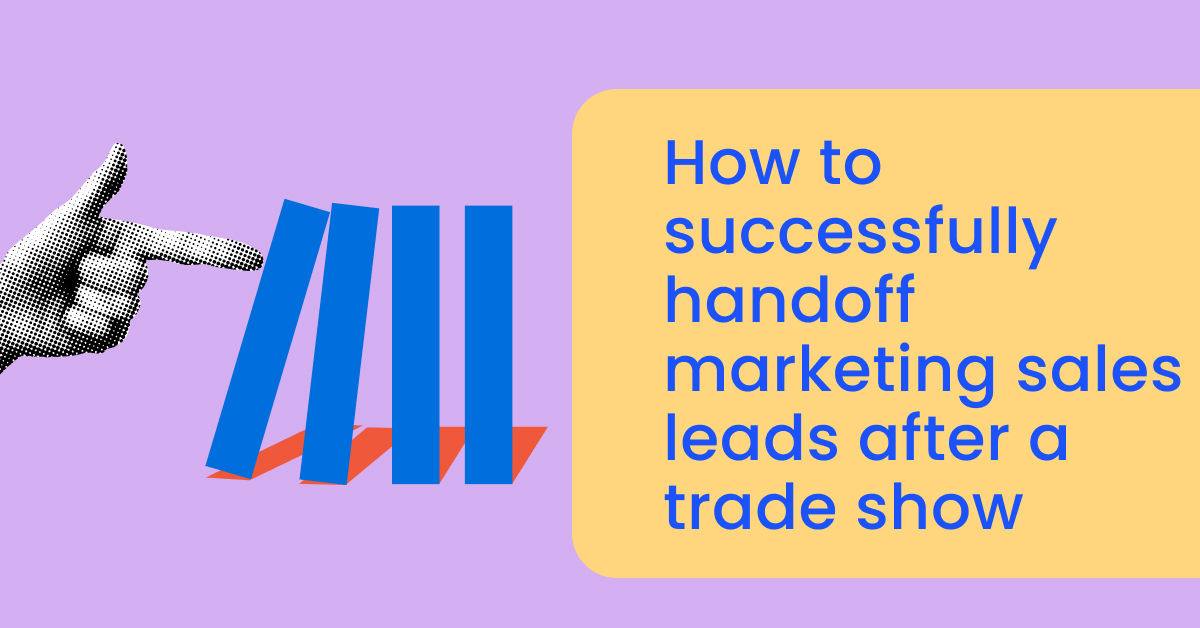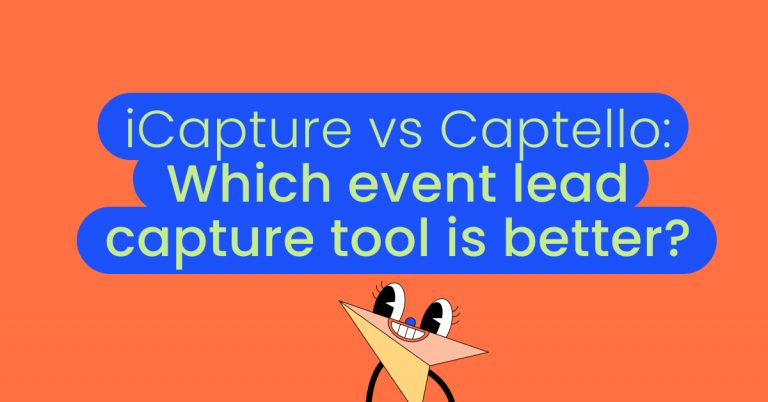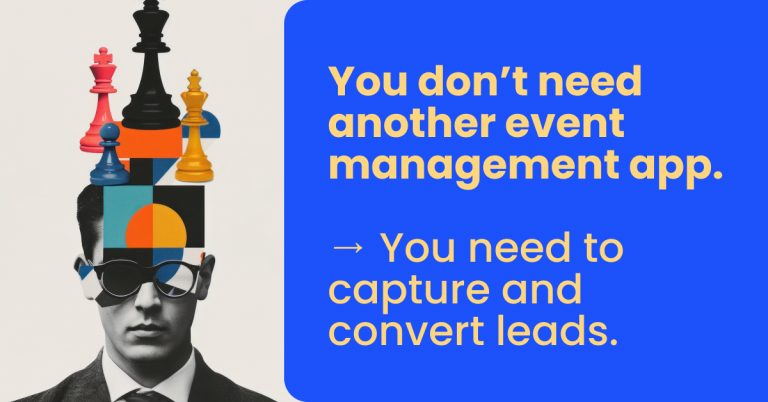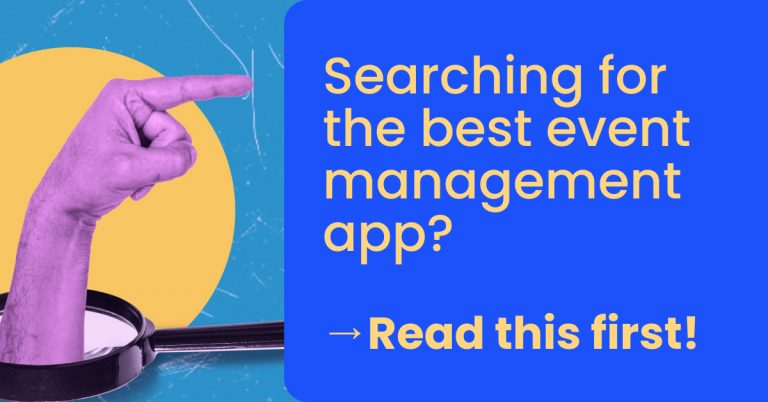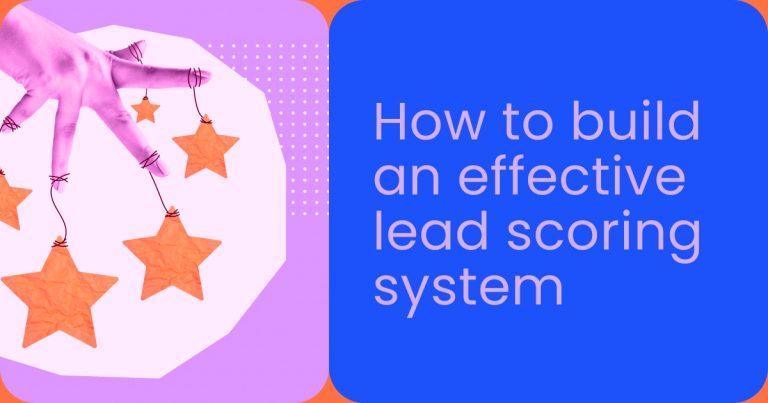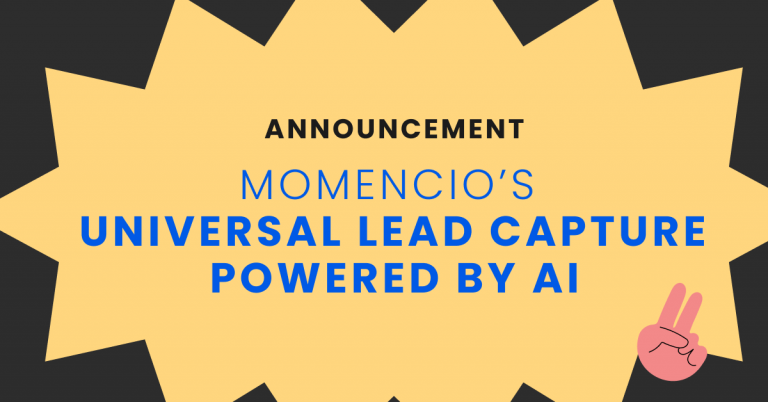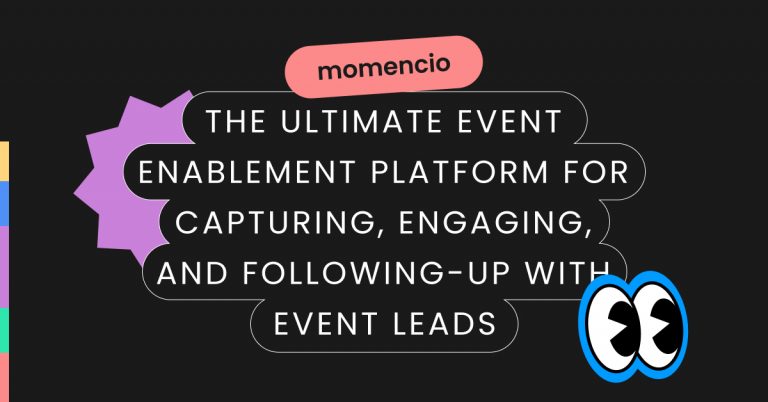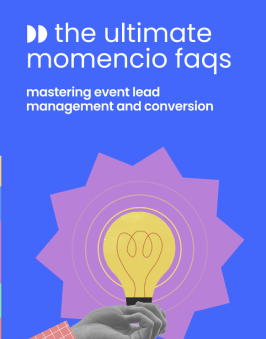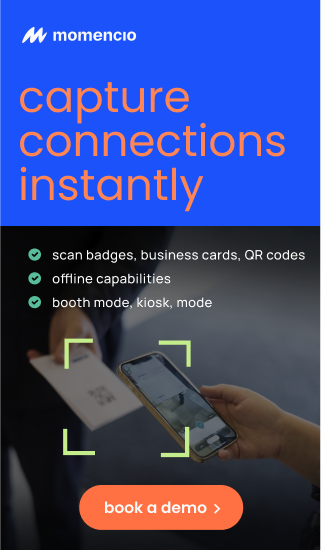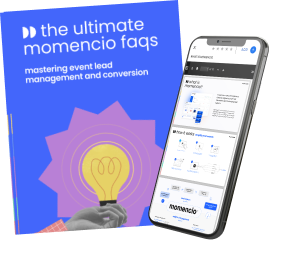Most businesses don’t have a trade show problem. They have a follow-up problem, the larger pie of the marketing sales leads.
They spend tens of thousands of dollars on booth space, signage, promotional materials, and travel. They train their teams, perfect their pitches, and collect a stack of business cards. Then they go home and do… nothing.
The leads sit in a spreadsheet, waiting for someone to remember they exist. By the time a sales rep finally reaches out, the prospect has forgotten the conversation, moved on, or worse—signed with a competitor who followed up first. Marketing sales leads don’t turn into revenue just because they were collected—they turn into revenue because they were followed up with the right way.
The truth is, the trade show wasn’t a failure. The failure happened after the event ended.
Marketing thinks their job is done when the event closes. Sales expects leads to be magically warm and ready to convert. The result? Frustration, blame, and wasted opportunities.
Companies that master the handoff don’t just follow up—they orchestrate a system that moves prospects from curiosity to commitment with precision and speed. They don’t rely on “let’s touch base” emails or hope that leads will remember them. They create a process so seamless that the lead never gets the chance to go cold.
Because the secret to trade show success isn’t what happens at the event. It’s what happens after.
If you’re ready to stop collecting leads and start closing them, let’s get to work.
Why marketing sales leads fail to convert after a trade show
Most businesses assume that collecting leads is the hard part. It’s not. The real challenge is what comes next.
A lead is not a sale. It’s not even a prospect. It’s just a moment—a brief, passing connection. And the longer you wait to act on it, the more it fades.
There are four reasons why trade show leads slip through the cracks:
First, slow follow-up.
Most companies wait too long. They think a few days won’t matter, but the truth is, speed wins. A study found that leads followed up within five minutes are 21 times more likely to convert than those contacted after 30 minutes. Yet, most trade show leads sit untouched for days, sometimes weeks. By then, the interest is gone.
Second, a lack of clarity.
Marketing hands over a list, but sales has no idea who’s worth calling. Some leads are just badge scans from someone who wanted a free pen. Others are real buyers. Without a way to tell them apart, sales wastes time on dead ends while the real opportunities get ignored.
Third, generic outreach.
“Hey, great meeting you at the trade show! Let’s set up a call.” Delete. People don’t remember who you are. They don’t know why they should care. The best follow-ups don’t just remind leads that they met you—they remind them why they should want to hear from you again.
And fourth, the marketing-sales disconnect.
Marketing thinks its job is done when the event is over. Sales assumes marketing will hand them hot leads. Neither is wrong, but both are missing the bigger picture. The best companies align these two teams before the event even begins, so by the time the leads come in, everyone knows exactly what to do next.
Trade show leads don’t die because the event wasn’t a success. They die because the system failed them.
So, let’s fix the system.
Best practices for a seamless marketing-to-sales handoff
A lead is a spark. It has potential, but without the right conditions, it fades.
The best companies don’t hope for conversion. They design for it. They build a lead handoff system that ensures every sales-ready prospect gets the right follow-up at the right time, with the right message.
Here’s how they do it.
First, they define a lead. Not all trade show contacts are created equal. Someone who stopped by for a free tote bag is not the same as someone who asked about pricing. A proper lead handoff starts before the event, with clear definitions. Who counts as a qualified lead? What criteria make someone worth a follow-up call? If sales and marketing don’t agree on this, the system breaks before it even starts.
Second, they prioritize ruthlessly. Sales doesn’t have time to chase every lead. They focus on the right ones. That means using a lead scoring system—ranking prospects based on their engagement, job title, budget, and interest level. Someone who attended a demo and asked for pricing? Hot lead. Someone who just scanned their badge and left? Not so much.
Third, they act fast. The faster you follow up, the higher your chances of closing the deal. Yet most companies treat trade show leads like a to-do list item for next week. A lead that was excited about your product on Monday has already forgotten you by Friday. The best teams follow up within 24 hours—because attention fades, and competitors don’t wait.
Fourth, they use automation wisely. A CRM is not a storage bin. It’s a workflow tool. The best companies don’t just dump leads into a system and hope for the best. They automate email sequences, assign follow-up tasks, and make sure no lead is left untouched. The key is balancing speed with personalization—fast but relevant, automated but human.
Fifth, they align incentives. Sales hates bad leads. Marketing hates being ignored. The best companies don’t let these frustrations build up. They align their teams with shared goals: revenue, not just lead counts. They track what happens after the trade show and adjust their strategy based on real outcomes, not just vanity metrics.
The companies that win at trade show follow-up don’t do more. They do it better.
Optimizing post-event follow-up for better conversion
The trade show is over, but for your leads, real life just started again.
Their inbox is overflowing. Their to-do list is longer than it was before they left. They’ve mentally filed the event under “last week’s news.” And that’s your problem.
Your follow-up isn’t competing with other vendors. It’s competing with their priorities.
So, what happens next? Most companies follow up like this:
Approach |
What it looks like |
Result |
| The generic blast | “Great meeting you at [Trade Show]. Let’s set up a call!” | Ignored. Feels like spam. |
| The delayed response | No outreach for a week. Then a “just checking in” email. | Too late. Interest is gone. |
| The value-first approach | “You mentioned [problem]—here’s something that might help.” | Opens a real conversation. Moves the deal forward. |
The companies that win at follow-up don’t follow up just to stay on the lead’s radar. They follow up to deliver value immediately.
Here’s how they do it:
- Speed: First email within 24 hours while the conversation is fresh.
- Personalization: Reference something specific from the discussion—a challenge they mentioned, a goal they shared, a competitor they named.
- Multiple touchpoints: One email isn’t enough. They combine email, LinkedIn, and even a short video message to cut through the noise.
- No ask, just give: The first follow-up isn’t about requesting time. It’s about proving you’re worth their time. A relevant case study, a useful article, a quick demo video.
The best follow-ups don’t just remind a lead that you exist. They make them glad you reached out.
Measuring success and improving future lead handoffs
Most companies measure trade show success by counting leads. It’s the wrong metric.
Leads aren’t the goal—conversions are. A full pipeline means nothing if the deals never close. So, instead of celebrating how many contacts you collected, start measuring what actually moves the needle.
The three metrics that matter
- Speed to follow-up – How long does it take for sales to reach out? Anything beyond 24 hours is a missed opportunity.
- Lead-to-meeting conversion rate – Out of the leads marketing handed over, how many booked a meeting? If this number is low, either the leads weren’t qualified or the outreach wasn’t compelling.
- Sales conversion rate – How many of these leads actually turned into paying customers? This is the ultimate measure of whether your event was worth the investment.
Most companies track only the first number. The best companies track all three. Because if leads don’t turn into meetings and meetings don’t turn into revenue, what was the point?
What to fix when the numbers don’t add up
- Low speed to follow-up? Automate the process. Assign leads to sales reps instantly and trigger personalized outreach within hours, not days.
- Low lead-to-meeting conversion? Improve the handoff. Marketing should give sales context—not just names but notes on what the lead cared about.
- Low sales conversion? Focus on quality, not quantity. If leads aren’t closing, you’re either attracting the wrong audience or not nurturing them properly post-event.
The trade show feedback loop
Great companies treat trade shows as experiments. Every event is a chance to refine the process. After each one, they ask:
- What percentage of leads converted?
- Which outreach method got the highest response rate?
- How did our sales team rate the quality of leads?
- What should we change next time?
Without these insights, you’re just running in circles—collecting leads, losing them, and repeating the cycle.
Turning trade show leads into real sales opportunities
A trade show doesn’t create customers. It creates possibilities. The difference between a wasted budget and a record-breaking quarter is what you do next.
Here’s the simple formula for success:
- Capture with purpose – Stop scanning badges for the sake of it. Every lead should have context—what they asked, what they need, what their next step should be.
- Handoff with precision – No more dumping leads into a spreadsheet. Every lead should be scored, prioritized, and assigned to the right sales rep with clear follow-up instructions.
- Follow up with urgency – If your email isn’t in their inbox within 24 hours, you’re already behind. If it isn’t relevant, you’re already forgotten.
- Measure, adjust, improve – A bad trade show process isn’t a one-time failure. It’s a system failure. Fix it, refine it, and watch your results change.
Most companies make trade shows harder than they need to be. They treat them as disconnected events instead of an extension of their sales funnel. The best companies don’t just show up—they execute, refine, and close deals long after the booths are packed away.
The trade show isn’t the opportunity. Your process is.
Most companies let trade show leads slip through the cracks because they don’t have a system. They rely on memory, scattered spreadsheets, and manual follow-ups that never happen on time.
But the best companies? They use tools that make capturing and managing lead data seamless, follow-up automatic, fast, and seamless.
That’s where momencio comes in.
With momencio, you can:
- Capture and qualify leads instantly – No more guessing who’s worth following up with. Every lead is enriched with insights, notes, and engagement data.
- Automate follow-ups within hours, not days – Personalized outreach, triggered automatically while the lead still remembers you.
- Integrate seamlessly with your CRM – Every interaction, every response, every action logged and ready for sales.
- Track performance and optimize your process – Know exactly which leads converted, which emails got responses, and which strategies need to change for the next event.

Trade shows aren’t just about collecting leads. They’re about converting them into real sales. And the companies that master this aren’t working harder—they’re working smarter.
So, the question is: do you want to win the trade show follow-up game?
If the answer is yes, it’s time to see momencio in action. Book a free demo.
FAQs
- How soon should we follow up with trade show leads?
- Within 24 hours. Speed is everything. Leads forget fast, and competitors move quickly. The sooner you follow up, the higher your chances of getting a response.
- What’s the best way to qualify trade show leads?
- Use a lead scoring system. Not every contact is worth a sales call. Rank leads based on engagement, company size, budget, and urgency. Prioritize the top 20% who are most likely to convert.
- How do we make our follow-ups stand out?
- Be specific and valuable. Reference your conversation, personalize the message, and offer something useful—an insight, a case study, or a short video. A generic “Great meeting you!” email gets ignored.
- What’s the biggest mistake companies make with trade show leads?
- They wait too long and treat all leads the same. The longer you wait, the colder the lead gets. And if you don’t separate hot leads from casual contacts, your sales team wastes time chasing the wrong people.
- How can we automate lead follow-up?
- Use a system like momencio. It captures, scores, and automates personalized follow-ups so sales can focus on closing deals instead of sorting through spreadsheets.
Interesting facts from research
- Lead conversion timing: Research indicates that 79% of marketing leads never convert due to lack of follow-up.
- Exhibitor follow-up delay: Approximately 40% of exhibitors wait between three to five days after a trade show to follow up with their leads.
- Email follow-up prevalence: A significant 81% of exhibitors use email to follow up with leads collected at trade shows.
